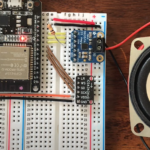Zero Trust Network Access (ZTNA) is a category of technologies that ensure secure remote access to applications and services by applying the principles of Zero Trust Security. Unlike traditional VPNs, which grant broad access to an entire network, ZTNA secures access on a per-application basis, dynamically establishing and terminating connections as needed. To fully grasp ZTNA, it’s crucial to understand the Zero Trust Security model it is built upon—a philosophy that fundamentally changes how we approach network security.
The Zero Trust Security Model
The Zero Trust Security model operates under the principle that no entity, whether inside or outside the network, should be trusted by default. Trust is never assumed; it must always be verified. This approach stems from the recognition that any user, regardless of location, can potentially be compromised. As such, access to applications and resources is not granted based on location, making geographical considerations irrelevant in this model.
In traditional IT security, once a user is inside the network, they are typically trusted to access resources without further verification. However, Zero Trust flips this model on its head. Here, every access request, no matter where it originates, is treated as untrusted until proven otherwise. Each request is evaluated independently, and access is granted only to the specific application or service requested. This ensures that users are provided with only the minimum level of access required to perform their tasks.
The Three Pillars of Verification: Identity, Context, and Security Posture
Zero Trust verification is anchored on three critical pillars:
- Identity: This involves verifying who the user is through identification, authentication, and authorization processes. Multi-factor authentication (MFA) is often required to ensure that the user is who they claim to be and has the necessary permissions to access the requested resource.
- Context: This pillar assesses the context in which the access request is being made. It aligns with the least privilege principle, ensuring that users only see and access the applications and resources necessary for their role. In Zero Trust, unauthorized users won’t even be aware of the existence of resources they do not have permission to access.
- Security Posture: The security posture of the user’s device is crucial in determining whether access should be granted. This may involve checking for compliance with security policies, such as the presence of up-to-date antivirus software or meeting specific security configurations. If a device does not meet the required security standards, access may be denied.
Continuous Monitoring and Validation
Zero Trust doesn’t stop at the initial verification. Once access is granted, continuous monitoring and validation are conducted to ensure that the identity, context, and security posture remain consistent throughout the session. Any changes could lead to access being revoked immediately. This ongoing scrutiny is what differentiates Zero Trust from other security models, offering a more dynamic and responsive approach to network security.
ZTNA Technology: The Role of the Trust Broker
While Zero Trust Security is a mindset and model, Zero Trust Network Access (ZTNA) is the technological implementation of these principles. At the core of ZTNA is the trust broker, a key component that mediates between the user and the application.
The trust broker enforces the Zero Trust principles by verifying identity, context, and security posture before establishing a secure connection between the user and the requested application. It continues to monitor these factors throughout the session. The trust broker can be deployed as a network device, a cloud service, or a combination of technologies, depending on the infrastructure—whether on-premises or cloud-based.
For instance, in cloud environments utilizing SASE (Secure Access Service Edge) or SSE (Security Service Edge), the trust broker is typically integrated within the cloud provider’s infrastructure, with examples including Zscaler, Palo Alto Prisma Access, Cato Networks, and Cloudflare. On-premises solutions might rely on network devices like firewalls, with Fortinet, Palo Alto, and Checkpoint among the leading vendors.
Practical Implementation and Vendor Solutions
ZTNA implementations can vary significantly depending on the vendor, and the trust broker is often not a single device but a decentralized array of technologies handling both the control plane (management, intelligence, and monitoring) and the data plane (enforcement and connection setup). Each vendor might offer a unique approach to achieving Zero Trust principles, but the core objective remains consistent: to secure application access dynamically and securely.
For example, one way to implement ZTNA is through a Software-Defined Perimeter (SDP), a topic covered in previous discussions. SDP is one method of achieving Zero Trust, though it’s not the only approach. The versatility of ZTNA means that it can be tailored to fit various network architectures and security requirements.
ZTNA in Action: A Practical Scenario
To illustrate how ZTNA works in practice, consider a user needing to access a corporate application. The user logs into their Identity Management (IDM) solution, which requires multi-factor authentication. The principles of Zero Trust ensure that the user only sees the applications they are authorized to access. When the user attempts to access the desired application, the trust broker verifies their identity, context, and security posture. If everything checks out, a secure tunnel is established between the user and the application.
This tunnel is monitored continuously, and any deviation in the user’s identity, context, or security posture can trigger a reevaluation, potentially leading to access being revoked. If the user needs to access another application, the process repeats from the beginning, with a new tunnel established for the new resource.
Conclusion
Zero Trust Network Access (ZTNA) represents a significant evolution in how we secure access to applications and resources. By adhering to the Zero Trust model’s principles—trust no one, verify everything—ZTNA offers a robust, flexible, and highly secure method for managing network access in an increasingly complex and distributed IT environment.












